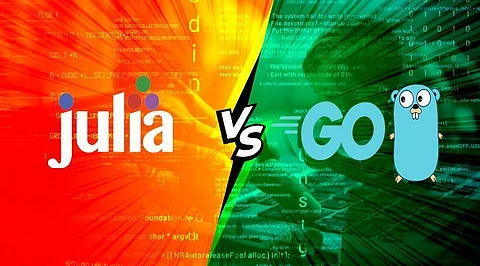

In the same way that we need a particular language to interact with people, programmers likewise need a programming language to speak with machines. As technology advances, youngsters are more eager than ever to master these programming languages. An enjoyable and satisfying way for kids to develop their problem-solving and logical thinking abilities is through computer programming.
Almost daily, new programming languages are developed, each with its advantages and disadvantages. Julia and Go are the two well-liked programming languages that are causing a stir in the developer world. Children can begin learning to programme at an early age, and there are numerous sorts of programming languages they can learn, including Julia and Go. But which one is the most difficult programming language for kids to learn? Let us know about it.
A team of four MIT students created the high-level open-source programming language, Julia. It is a dynamic, high-performance programming language used for scientific computer activities. Julia is a programming language used for statistical calculations and data analysis, much like R. Julia was developed primarily for its programming speed; when compared to Python and R, it executes code significantly more quickly. Julia supports big data analytics by completing challenging tasks like cloud computing and parallelism, which are essential to large data analysis.
Julia is simple to learn and is more similar to high-level programming languages like Python, C, R, etc. As a result, anyone can learn Julia very quickly, especially Python and C programmers.
Integrated Language: Julia has its roots in general-purpose programming and is designed for scientific computations, just like Python, R, and MATLAB.
Faster Execution: Julia is a programming language that combines Python and C. Because of this, C executes programmes far more quickly than Python, R, and MATLAB.
The stability of some more established languages is lacking in Julia because it is still a new language. Languages like R and Python have more library support than Julia currently has.
Programming in Go is procedural. Robert Griesemer, Rob Pike, and Ken Thompson at Google started working on it in 2007, but it wasn't released as an open-source programming language until 2009. Packages are used in the assembly of programmes to manage dependencies effectively. Like dynamic languages, this language also supports environment adoption patterns.
Golang uses a powerful type system and garbage collector, which contribute to its speed. Because it is statically typed, problems are discovered during compilation rather than during execution. For programmers coming from other languages, Golang is simple to learn.
A Go program's use of pointers and various return values can make it challenging to read and comprehend. The type system in Go is not as expressive as those in languages like Haskell or Scala.
Both Go and Julia are general-purpose languages that can be used for a wide range of applications, in addition to these benefits and drawbacks. However, Julia wins the prize for the simplicity of learning. Although there is no scientific way to gauge how difficult a language is, linguists sometimes use the "time to learn" metric to gauge how long it takes someone to become proficient in a language.
The Natural Language Processing (NLP) journal states that learning Go requires an average of 3,900 hours. Julia, on the other hand, only needs 2,400 hours to become skilled. That's a difference in study time of about two months! Additionally, Julia is simpler to learn than other well-known languages like Python. So Go is more difficult for kids to learn than Julia.
Join our WhatsApp Channel to get the latest news, exclusives and videos on WhatsApp
_____________
Disclaimer: Analytics Insight does not provide financial advice or guidance. Also note that the cryptocurrencies mentioned/listed on the website could potentially be scams, i.e. designed to induce you to invest financial resources that may be lost forever and not be recoverable once investments are made. You are responsible for conducting your own research (DYOR) before making any investments. Read more here.
